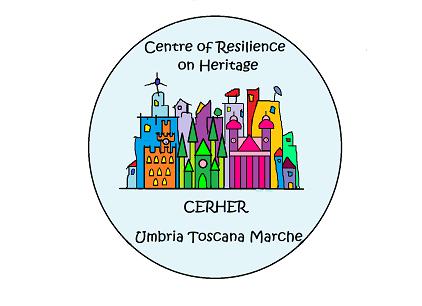
Centre of Resilience on Heritage (CERHER) logo
Geneva, 9 October 2017 - Italy will further strengthen its reputation as a leader on protection of cultural heritage from disasters when it opens a new Heritage Resilience Centre on October 13, International Day for Disaster Reduction.
Apart from its intrinsic value, cultural heritage provides employment to millions of people across the world and special measures need to be taken where such heritage is exposed to natural hazards including earthquakes and extreme weather events.
The theme of this year’s International Day is reducing the numbers of people affected by disasters, Target (b) of the Sendai Framework for Disaster Risk Reduction. Numerous examples have been cited where damage to cultural heritage can have a serious impact on the resilience and morale of survivors of a major disaster, notable the recent earthquake in Nepal which destroyed much of the historic centre of Kathmandu.
Perhaps no country in the world is more challenged on this front than Italy where the new Centre, involving Umbria, Tuscany and Marche, will be presented in Camerino, an Umbrian town that suffered serious damage during last year’s earthquakes in central Italy.
The initiative is being pioneered by Antonio Sgamellotti from Accademia Nazionale dei Lincei and Professor Emeritus of Perugia University who envisages the Centre as a pole of excellence for promoting the resilience of art cities in the face of earthquakes and the rising tide of extreme weather events. Last year the Accademia Nazionale dei Lincei ratified the “Charter of Rome on the Resilience of Art Cities to Natural Catastrophes””, a document providing guidelines to follow for risk reduction in Art Cities.
Explaining the background, Prof. Sgamellotti, said: “The Charter of Rome was adopted last year when we marked the 50th anniversary of the floods which did so much damage to Florence and its art treasures.